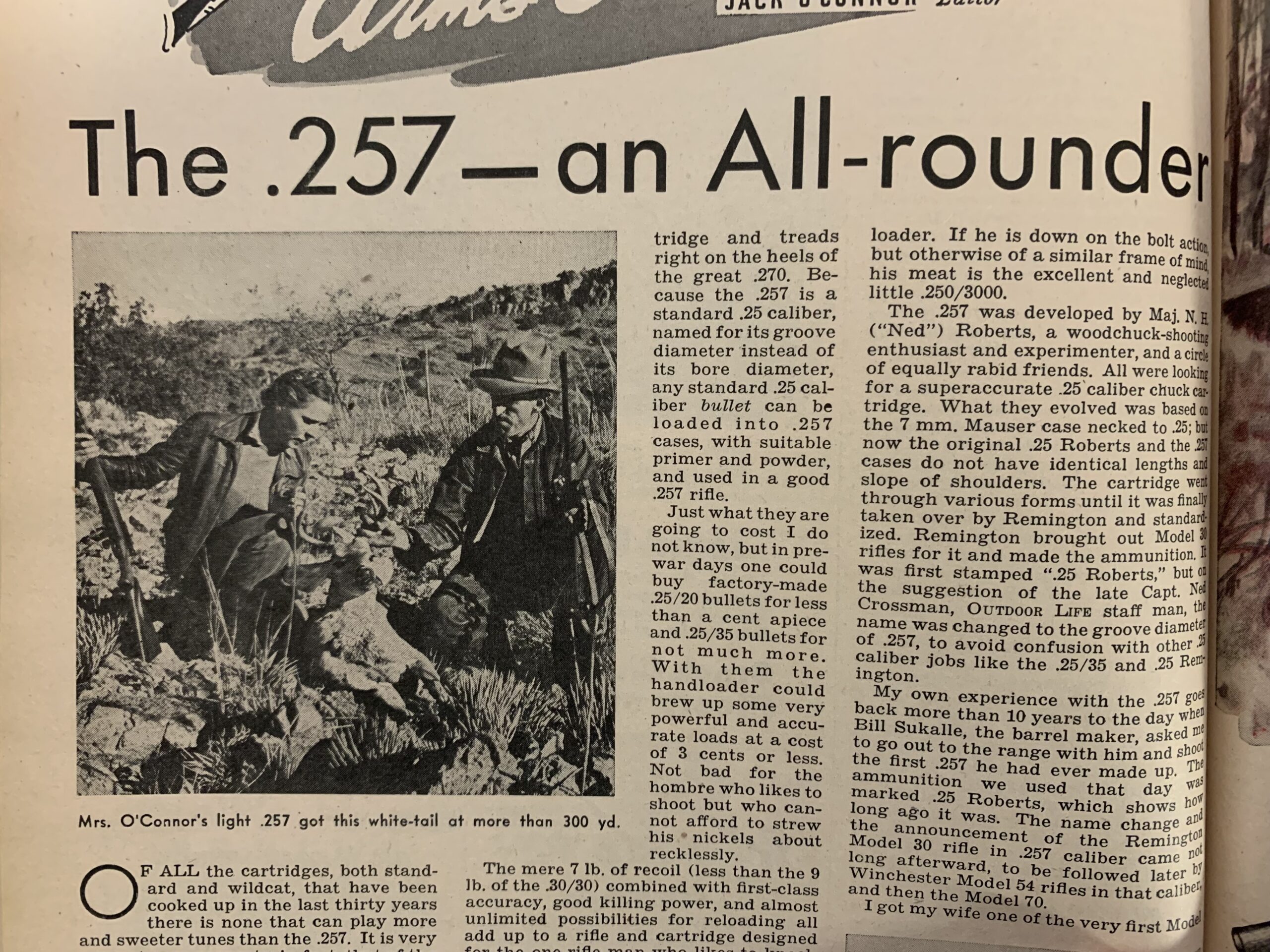Hot-shooting 22 caliber cartridges are nothing new, so what might newcomers like about the 22 ARC or 22 Creedmoor offering that’s different? After all, classic mid-caliber cartridges like the .243 Win., .250 Savage, .25/06 and others have held their own alongside .22 powerhouses like the .220 Swift and .22/250. What do these new .22 caliber cartridges do better than their predecessors, let alone the big game/vermin crossover cartridges? The answer may surprise you. I have a feeling that cartridges like the .22 ARC are going to prove their versatility and ability to serve hunters, and yes, do it better than some of the old favorites.
The mild cartridge sweet spot

Mid-size and smaller calibers have been popular with hunters for over a hundred years, especially for deer-sized game. In the early days, the .25s were quite productive and Jack O’Connor considered them the best choice for vermin and smaller big game. In the 1950s, the .243 came to prominence in this category.
Mid-range .24 and .25 caliber cartridges generally fire 55- to 125-grain bullets at excellent velocities with mild recoil. Until the relatively recent advent of laser rangefinders, the flat trajectories of these cartridges offered hunters a great deal of forgiveness at longer ranges compared to other cartridges of the era.
For many hunters, the .243 became the ultimate in versatility, and it has been used with great success on larger game such as black bear, sheep, and elk. As it turns out, smaller caliber cartridges that are accurate and easier to shoot are often more than capable of killing game effectively.
What do cartridges like the 22 ARC have to offer?
One of the most common criticisms of newer cartridges is that they are simply rehashing an old idea to revive gun sales and keep the marketing machine going. While firearms and ammunition companies are certainly concerned with keeping the business going, they are also motivated to gain a competitive edge and improve their products. When considering the features of a new .22 caliber hot rod, it’s easy to look at one or two features and assume that it can’t do anything the .22/250 can’t. But it’s not that simple.
As with all recent cartridges developed using the principles of modern cartridge design, the benefits are more than just pure velocity with a given range of bullet weights. In 1925, it made sense to evaluate cartridges for velocity and drop, but with the precision of rangefinders and optics available to shooters, those velocity figures are no longer of primary importance. With modified chambering, tightly twisted barrels, and handloaded ammunition, many of the older cartridges can certainly be improved, but as a whole, they simply cannot match the full range of benefits that some of these newer rounds offer.
For example, the 22 ARC, which is designed to deliver .22/250-like performance with a heavier-bullet .223-length cartridge, is cool, sure, but it’s the bullets it’s designed to shoot that make it special (you can read more about the details in shooting editor John Snow’s review of the 22 ARC ). Even I didn’t really start to see the 22 ARC’s potential until I built a few and started shooting them at range.
The day I realized there might be something in it, I was shooting a 20-inch gas-fired rifle I’d built myself. It was a fairly standard barrel nut design with a button-grooved barrel, but it printed surprisingly tight groups. I shot at targets out to 1,000 yards, alternating between a 6.5 Creedmoor loaded with 140-grain Sierra MatchKing bullets. Firing Hornady’s Black 75-grain ELD-M load, which I shot at 2,938 fps into a 10- to 12-mph crosswind, the .22 ARC had a flatter trajectory and was a one-to-one match for wind deflection with the heavier 6.5. While stretching the .223 out to that distance can be quite difficult, I made easy first-round hits and quick follow-ups, seeing the trace arc on target. And remember this is coming from a gas rifle, not the most efficient bullet in the cartridge.
I’ve long thought that a .22/250 would make a great sheep rifle, and legendary market hunter and predator control agent Frank Glaser touted his .220 Swift as killing ungulates faster than any other he’d tried. But compared to my long-favorite .25/06, the newer 6.5 Creedmoor, and others, the .22-caliber bullet choices simply gave up too much windage for my taste. That’s no longer the case. Hornady’s 80-grain ELD-X is a thickly jacketed, extremely efficient .22-caliber bullet that offers some distinct ballistic advantages over some bullets, and characteristics similar to others—all with essentially zero recoil.
In search of the perfect rifle cartridge
A perfect hunting rifle cartridge would deliver a projectile that creates an adequate wound cavity to kill prey quickly, and does so with a perfectly flat trajectory, zero wind drift, and zero recoil—but of course, there is no such cartridge, and we must compromise on these qualities. In the case of the .243 through .257 class cartridges, I have no problem shooting elk, sheep, or even a grizzly bear under the right conditions, with a good, short 90-, 100-, or 110-grain bullet. I’ve shot plenty of game with them. So why not use an 80-grain bullet with similar characteristics, but with better sectional density, equal or better trajectory, and equal or better wind drift? In fact, I think that as bullet technology continues to give us hyper-efficient, heavy .22s, the only thing we’ll be sacrificing is recoil.
Tyler Freel
 Healthy Famz Healthy Family News essential tips for a healthy family. Explore practical advice to keep your family happy and healthy.
Healthy Famz Healthy Family News essential tips for a healthy family. Explore practical advice to keep your family happy and healthy.


